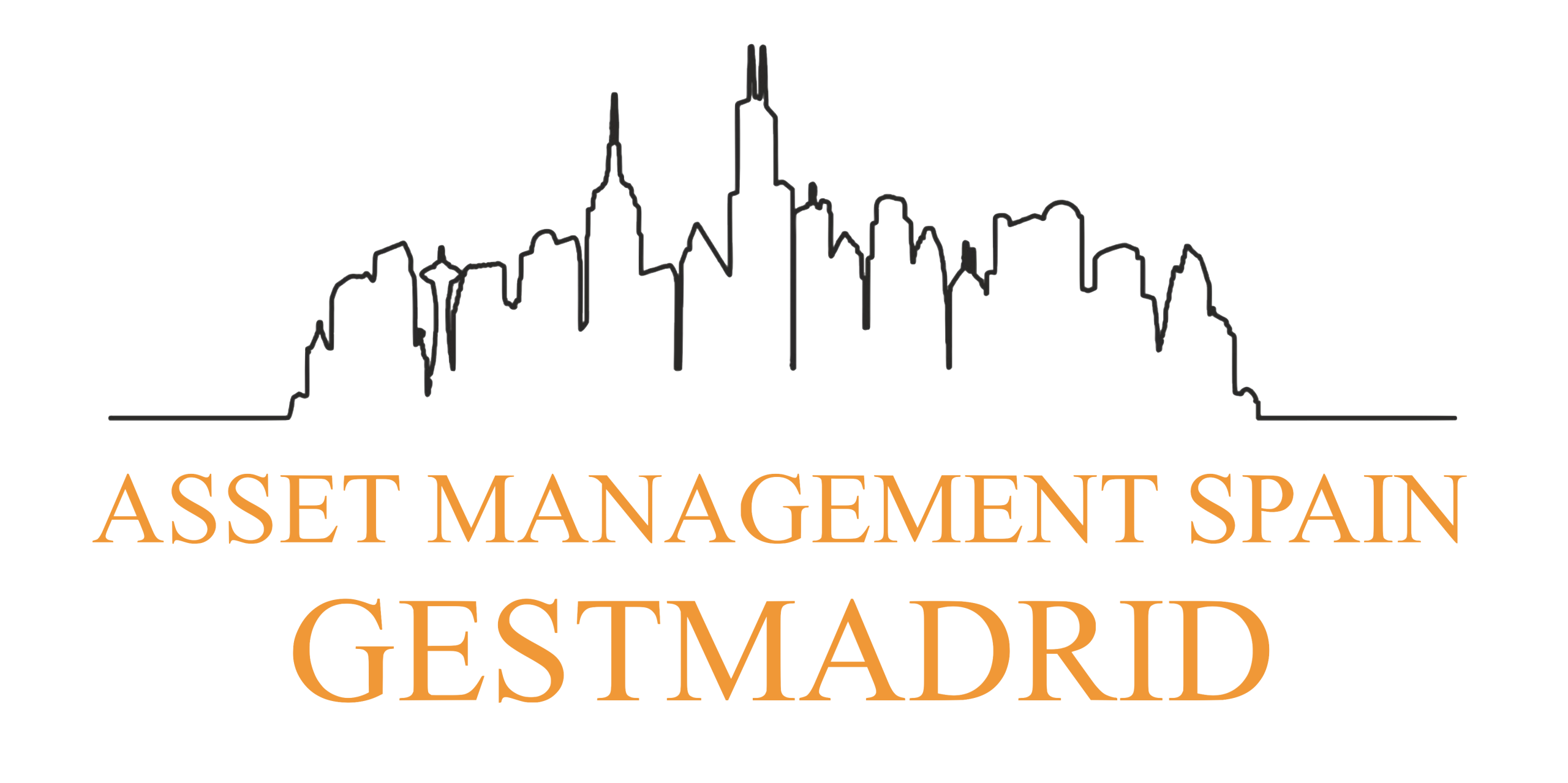Today we speak with Cristina Martínez, better known as Garbancita, the name of your blog. She is a reference in the world of gastronomy and popular both for her content on the network -which she has been feeding for more than ten years-, and for her collaborations in the media. Her specialty? The kitchen, the hotel industry and culinary matters in general.
At Asset Management Spain we wanted to deal with the issue of premises destined for the hospitality industry with someone who was an expert in it and external to real estate. When we thought about this, the frankness and sincerity that characterizes Garbancita led us directly to Cristina, to whom we had the pleasure of asking a few questions, which she answered giving us the experienced her opinion.
Some investors and hoteliers have found themselves in a situation of uncertainty with the blow caused by the Covid19 health crisis, is it still a profitable business? Cristina Martínez, Garbancita, answers some questions, clearing up many of our doubts.
Her approach, her freshness and her way of telling us things as she thinks about them, makes this interview a very interesting, entertaining and enriching read.
- What do you think attracts customers to a restaurant apart from the food, of course?
Which is a meeting point with other people. Either because we are going to have something frugal, because we are going to celebrate an important event or because we have agreed to have a meeting there. And because, as a meeting point, it represents us in some way; either because of its interior design, because of its philosophy, because of its price… or because it is aspirational.
- Every time we find more restaurants that do not have a kitchen on the premises, they have an industrial kitchen and then they bring the dishes ready to give you the last blow of heat in the restaurant. What do you think of this kitchen concept? Do you think it works well? Do you think they opt for this type of business to cut costs, to save time? What does it bring to the client?
I think it is a formula that allows a restaurant to maintain a constant level of regularity in its quality, regardless of the necessary qualified personnel, which often does not guarantee maintaining that quality, especially due to labor mobility.
I also think there has to be a match between the price and the actual cost of producing it. I have no problem paying more if everything is more artisanal, but I don’t like people who don’t do it that way to pass off their dishes as freshly prepared.
It is a very interesting solution for many business models, especially because it frees up an important part of the investment when opening a restaurant. And it can even be a solution for premises that lack a smoke outlet.
- Many European capitals have been very familiar for years with the food market, however in Spain it seems that it is difficult for us to start. Is it possible that after Covid19 people flee from closed spaces and we find ourselves with the opening of more food markets than restaurants?
I doubt that Covid19 is going to change those habits, after all, we go out for tapas or pintxos, and we are not going to change that. What I do believe is that it can be an opportunity for hoteliers who can opt for a model in which the client/user is the one who uses community facilities, so that they do not have to take responsibility for them. A food market could be a neomerendero where it is the customer who moves around the different establishments, shopping and buying food and drink to eat there, in those common facilities. I am of the opinion that the hotelier cannot take charge of the customer’s health. It is unfeasible and illogical. Whoever occupies a table should be in charge of what to do, who he goes with and how he behaves.
A few days ago on the radio he spoke precisely of those old models of hospitality in which the client used those common resources and even brought part of the food or drink. He analyzed how they emerged and at what time, and also how they evolved to the present day. elBulli itself was born from a hut made with four stones and two sticks…
- Also with Covid19 we have ordered a lot at home, are we going to stay in the comfort of our home or do you think we are more into betting on the comfort of being served? Is it possible for people to go from one side to another or are we looking forward to going backto sit at the table with a tablecloth and call the waiter?
The problem with delivery in the medium term, I don’t think we are going to hesitate between eating out or having it delivered to our home. Right now we live a mirage caused by the situation. Without wanting to be defeatist, I can’t help but be pessimistic and predict that the cuts that will come shortly (especially to civil servants’ salaries) are going to greatly change the landscape of the hotel industry.
It is not possible to speak of a post-war situation, as the situation is constantly referred to in the media, and ignore the obvious changes that this will cause. We must be very careful with the mirages that we see now, the situation has not yet shown us its real face.
With people bored and locked up at home, and still with money to spend, the delivery has experienced a few weeks of splendor that I doubt will last… In addition, most hoteliers have started to serve at home of the same nerves. If they start to make numbers, it is totally unfeasible to allocate the cost of transport and that the accounts come out. The problem of the last mile is still not solved in a profitable way and, the day it happens, it will be for the big distribution companies (food and fast food).
- What do you think about opening a restaurant right now? What restaurant concept do you think can be more successful for those who are going to undertake?
Someone with a lot of initiative and a desire to work could open a bar, but under very specific conditions, very similar to those that existed in the hospitality industry that flourished in the late 1970s. Being the owner of the premises, or at least a formula where they don’t gouge out their eyes with the rent. I work as a family or as a couple, the only way to have a realistic and constant commitment to the business. And finally, specialization, specialization and more specialization.
If things turn the ant color that we foresee, people will look for an establishment with a premium offer for special moments to which they give due importance or, in the opposite case, they will look for an offer that, being economical, offers a plus differentiation. If the economy collapses we are not going to leave the house to eat any kind of potatoes because they are cheap, but we are going to eat the best patatas bravas, but only the best. Hence the specialization, because you can be more competitive and make better profits.
- Pintxo bars at the bar, what’s in store for them?
Most of them already complied with the regulations, regarding being covered at the counter, except for the bars in Guipúzcoa (I don’t know if in the whole province, but Donosti and Hodarribi for sure), so in that area not much should change. Another issue is the circulation of customers, since the model is usually quite informal and not always equally itinerant.
The bar and the terrace have always competed, but now is when the terrace is going to beat the bar by far… Perhaps we will see pintxo and tapas carts, in the style of the old dessert carts.
- There is nothing that characterizes us more to the rest of the world than Spanish Tapas. Tapas is our symbol, sharing, snacking from there and from here, what do you think will happen now with this? Will they streamline the tapa portion so we don’t have to share? Will we stop sharing tapas? Will each one ask for their bravas? What do you think about this, not only in the tapas, but beyond, in ordering a pizza for two, in the starters or the dessert for “in the middle”?
Well, actually the tapa is the way to not share a portion. It is supposed to be a personal and individual portion. I would say, in fact, that the pintxos and tapas are not shared. What’s more, I will say that I was a bit fed up with sharing dishes, something that emerged as a trend in the 2010 crisis as a formula to opt for a greater assortment of dishes with the same budget.
I already wrote about this phenomenon in its day, claiming just the opposite model. If I go to a place that has some tripe that drives me crazy, I don’t want to share my favorite dish with other people, to eat a little, along with other things that I don’t like so much but others do. Sharing the moment, yes, the food…well, not always, really.
Another madness… how can a couple who sleeps in the same bed not be able to share a dessert? The private life of the clients, who they go with and how they are in health, they have to take care of.
- If you were to open a restaurant, what kind of place would you look for right now? Large dimensions to be able to always maintain the distance factor, ventilation systems…?
I don’t think such an investment is viable. Actually the restaurantsit is they would sell space more than food and that is not business. They would have to pay very high rents for a space that is not profitable. On the other hand, the issue of ventilation systems, or any other innovation, I think is usually a trap for the hotelier who, like many other times, invests in something that later does not work (we all remember the partitions of the Anti-Tobacco Law).
Today, who knows if in six months the same can be said, the determining factor is the terrace.
- In recent years, restaurants where you sit down to dinner and at a given moment of the night, turn up the music and end up dancing as if you were in a disco, have been very fashionable. Regarding the clubs, we already know that there is a lot to work on before recovering those endless nights where we all dance with everyone. Do restaurants whose charm is that have much to lose, or can they be renewed in some way?
Well, I don’t know places that follow this fashion… I think it’s because they aren’t very much my style. If I dine, I dine. If I dance, I dance… I’m not too interested in venues that play to cover the entire spectrum of the offer (breakfasts, snacks, dinners, baptisms, weddings and communions). Being in front of a large plate in the midst of flashes of light and loud music is not the ideal format for gastronomy.
- For a few weeks we have already been able to recover the terrace and in many places we have found the QR code to download the menu. Do you think it limits? This means that many people -generally older- cannot access the letter, since many use phones without so much technology. It also assumes that you can not run out of battery, solutions? And in any case, do you think we will keep this system?
The QR has always been a great idea that unfortunately has not evolved, not even on an aesthetic level. I doubt that this is, finally, the time to succeed in this format. A few days ago, on a terrace in Donosti, I saw that the revolutionary and avant-garde blackboard method was used to display the offer. People come up, look at her and ask. No one touches it, the letter has a good size and you can consult it without any problem.
If we talk about older people, what they like is the open letter, so it is a good time to recover that offer system. Closer, ecological and economical, impossible…
- In the news we have seen many types of inventions to safeguard the safety of diners and employees in restaurants: individual bubbles, the QR codes that we talked about before, the door frames that spray you with ozone… which one has caught your attention the most, the most effective for you or if you would apply your own system?
In particular, I use an ultraviolet light disinfection system to sanitize some personal belongings. It was commented a few weeks ago that it could be a reliable disinfection system and just these days the viability of this type of technology is being confirmed. It could deactivate 99% of the coronavirus in just 6 seconds.
- Finally, we would love for you to tell us about your next projects.
A little over a year ago, I returned to my old job as a teacher in the computer science area. The truth is that I did not remember how much I like this subject, especially now that data analysis has become so important and there are so many wonderful analysis tools.
I’m not sure what’s going to happen now with my job, but my idea was to continue working in the area of gastronomy in the free time that teaching leaves me, and get into big data analysis for restaurants and food. I have experience in data architecture, but I am interested in doing it in an area that I know perfectly well and see what conclusions can be drawn. I no longer trust what the client says, so I want data.







